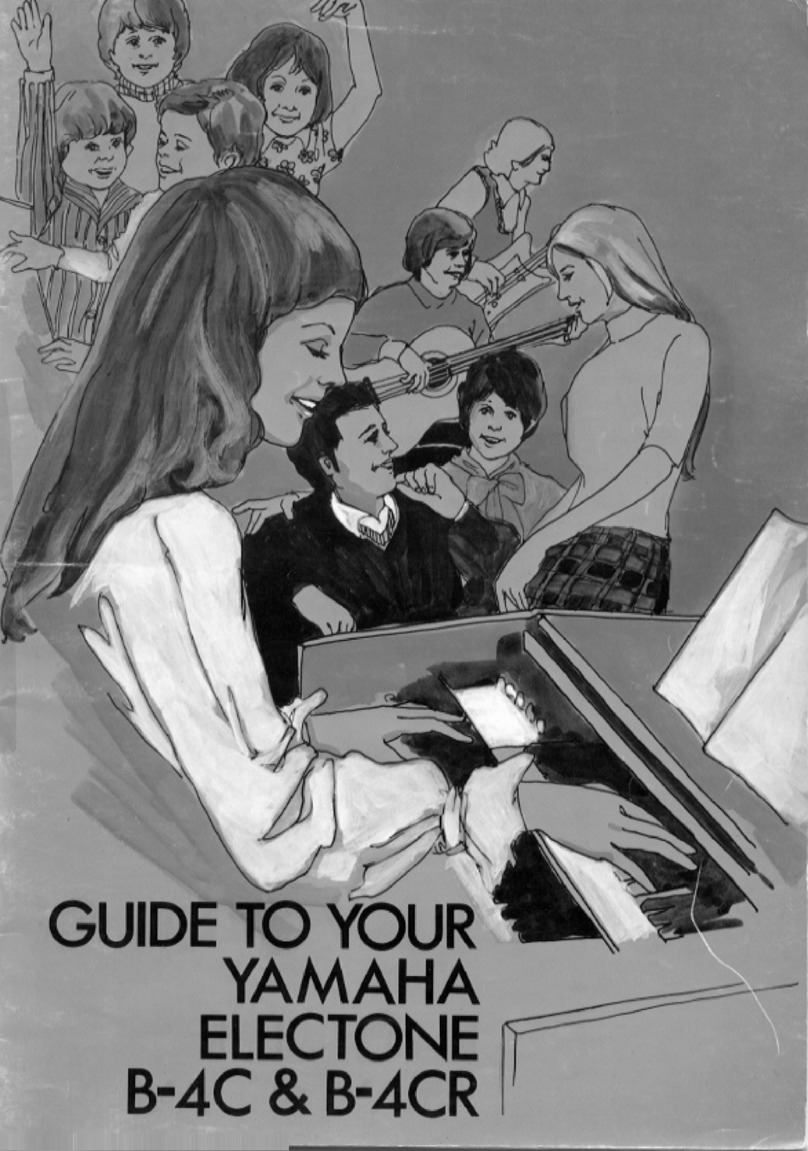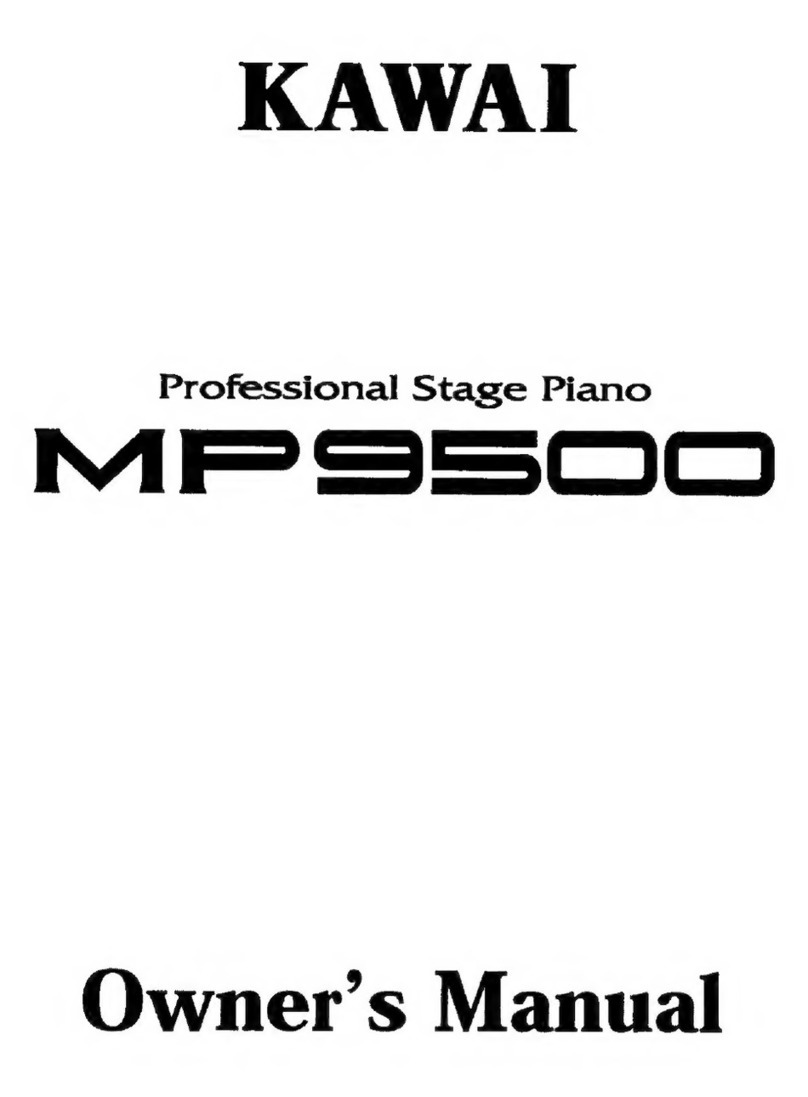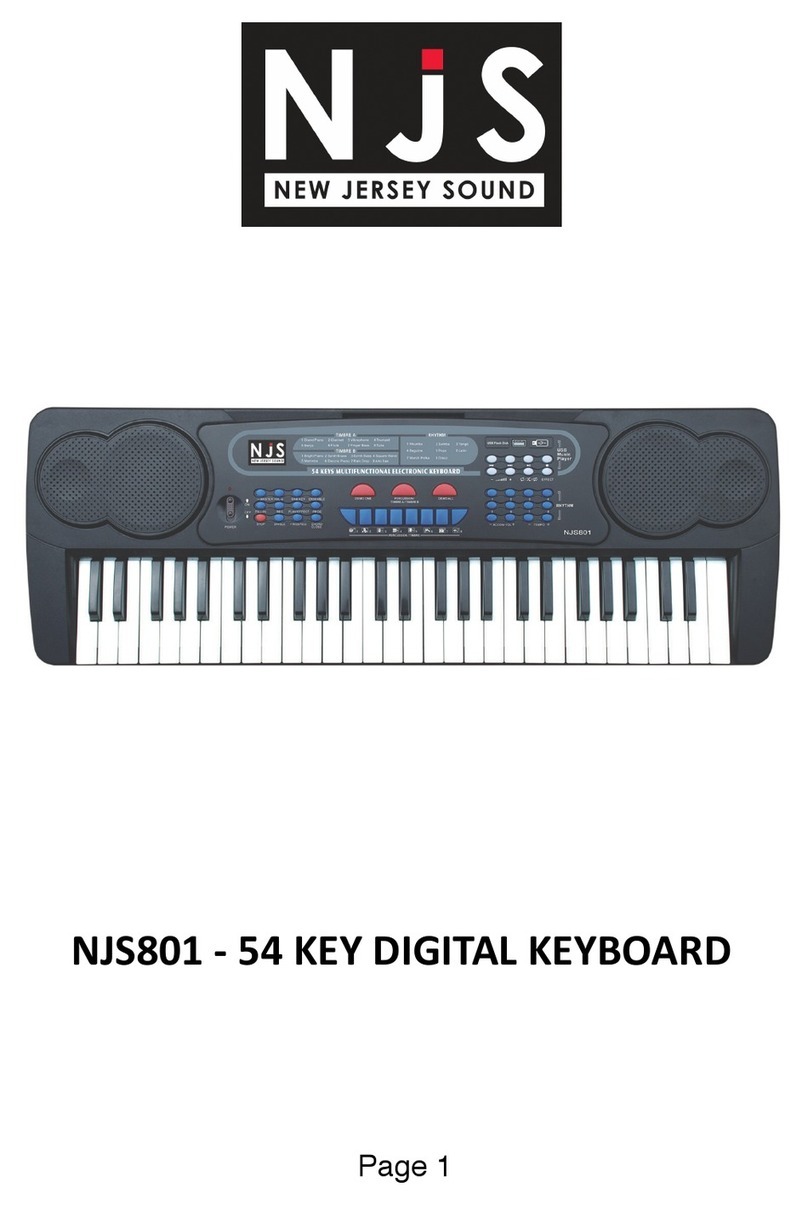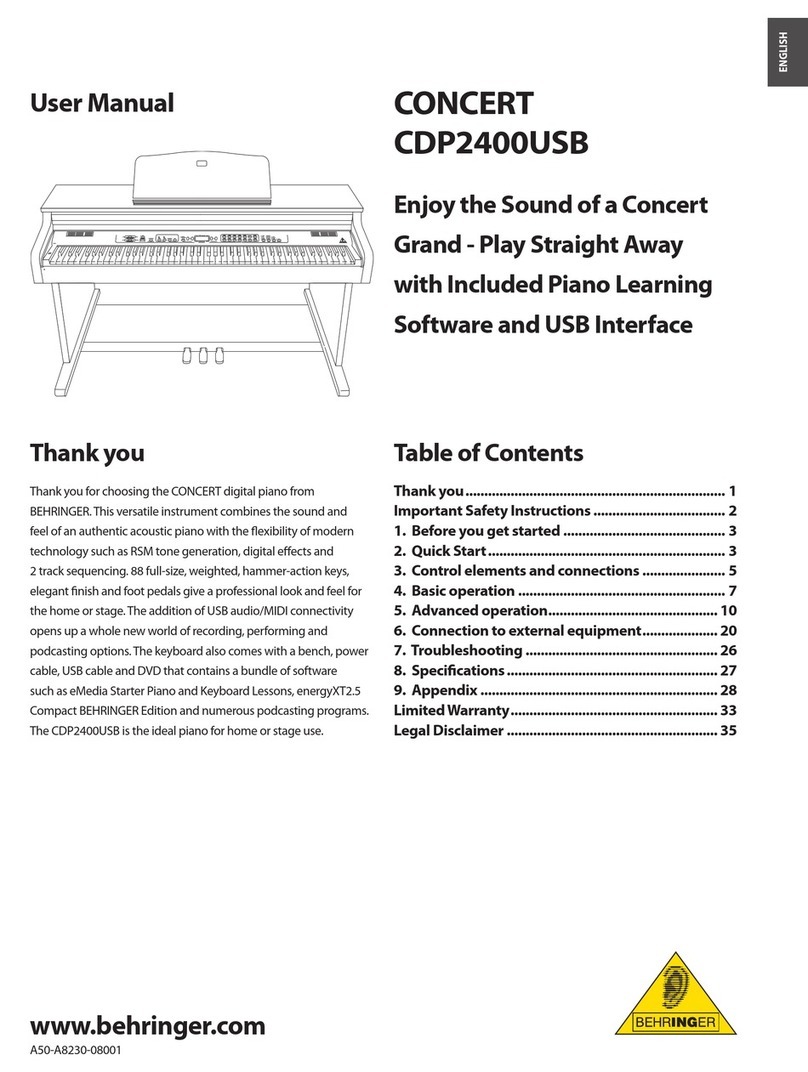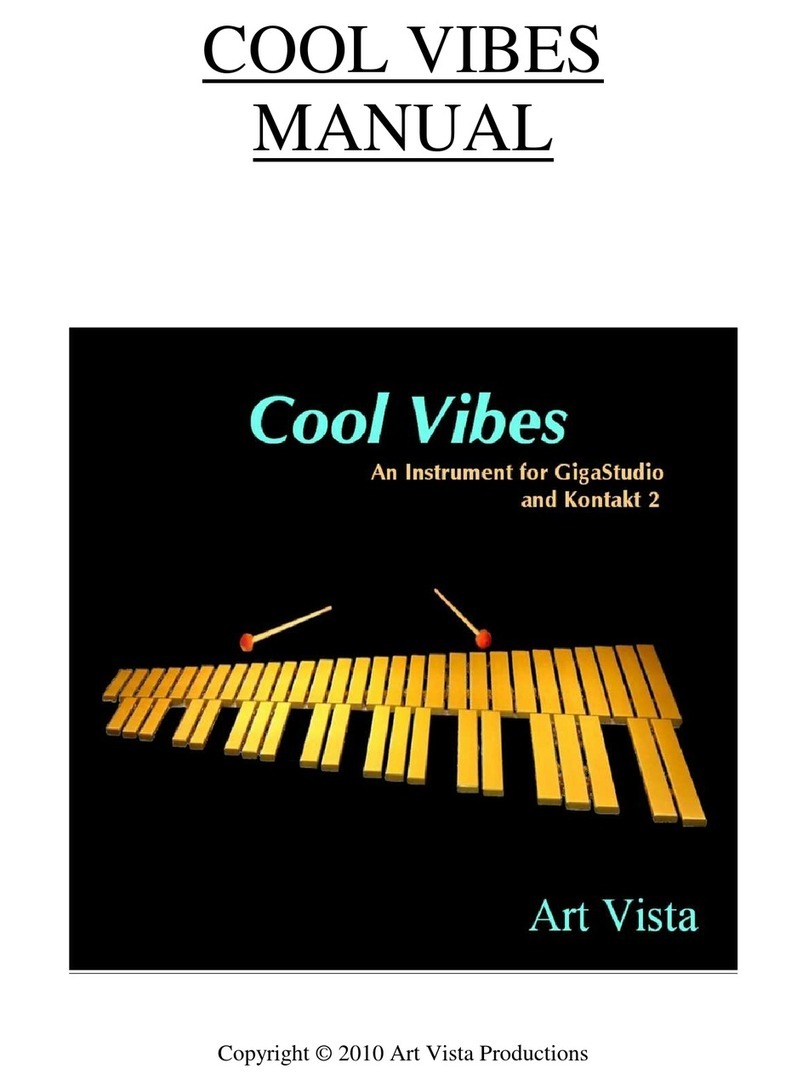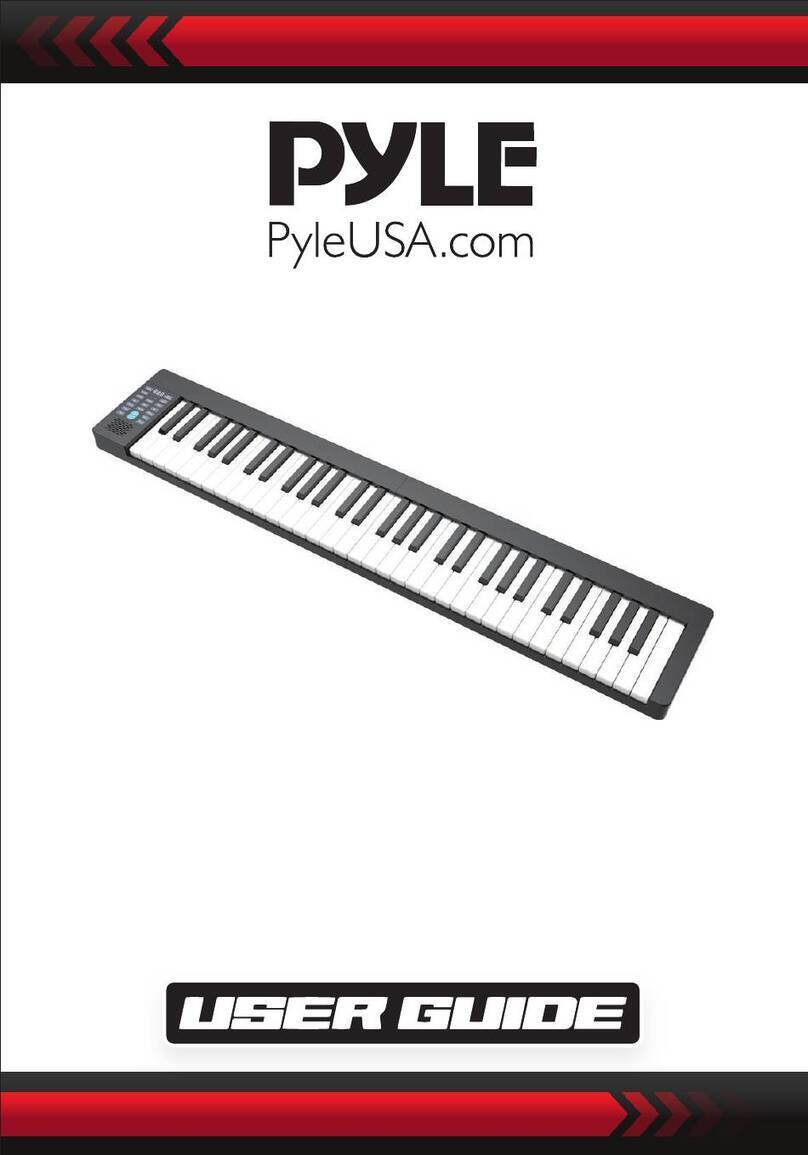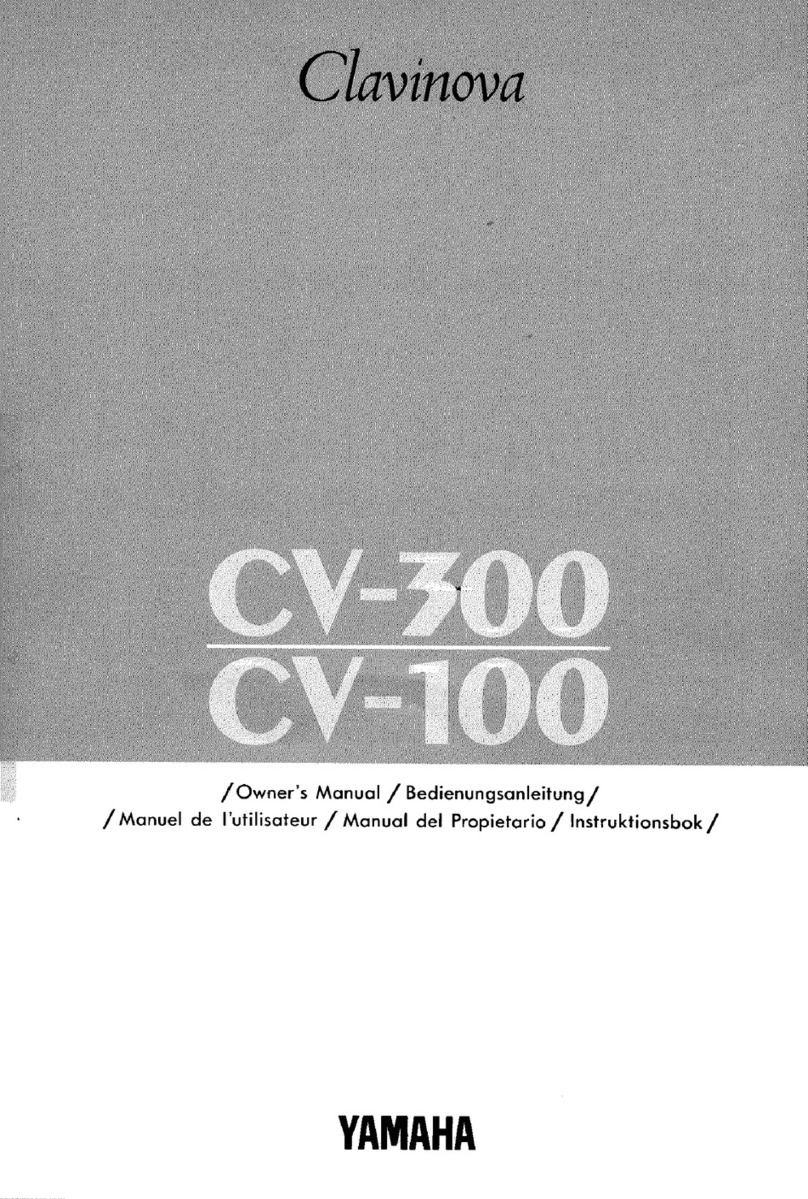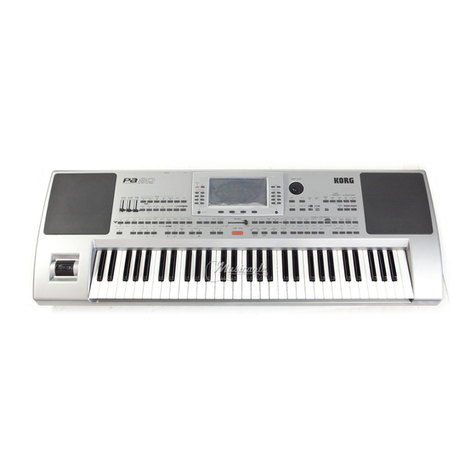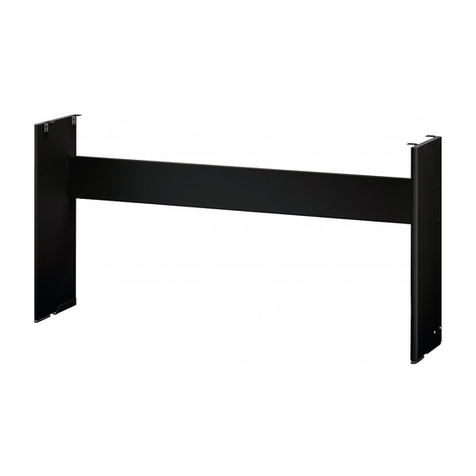Choroi Children's Harp User manual

THE CHILDREN'SHARP
The children's harp is a musical instrument with only
seven tones, especially developed and built for
children. Its simple and clear-cut form, the delicate,
yet rounded tone, as well as the arrangement of the
tones, relate to the musical experience ofthe child. In
the music itself this experience finds its expression in
the so-called Mood of the Fifth.
MUSICAL MODES; PENTATONIC AND MOOD OF THE
FIFTH
The way in which a child experiences music differs
from that of the adult. He is far more receptive to
everything going on in the world around him. He
becomes deeply involved with, and experiences
inwardly, the sounds and noises he hears, and this
involvement influences his experiences of musical
sound in a very particular way. The way in which one
creates music depends on how one hears music. For
an adult the ground tone, the tonic, is almost always
the reference point, the foundation of the melody. For
the child, the melody moves around a note, but one
which to his earnever sounds fixed in the way a tonic
does.
The child's interestis focused on the intervals between
the notes. These intervals are "open" to him in every
senseand not "categorized" and referred to anysystem
of musical expression. This is particularly apparent,
and is experienced as a feeling of both openness and
movement, in the interval of the fifth, which is the
basis of the so called mood of the fifth (German:
Quintenstimmung).
The fifth d' - a', e' - b', a' - e'', and g' -d'' should
be tuned pure, with the a' at 432 Hertz. When
playing together with other instruments which have a
fixed pitch (e.g., flutes), the a' may be tuned to 440
Hertz. Tuning forks with these pitches are availavble at
your Choroi-workshop or music store. Likewise a
pentatonicpitch-pipe in a'=440 Hertz is available. The
mood of the fifth comes into being when fifths are
formed above and below the tone a':
d' - a' - e''
To these three basic notes are added the seconds,
which keep the adjoining notes flowing and flexible.
d' - e' g' - a' - b' d'' - e''
In this way, pentatonic music can be developed within
the mood of the fifth, in the five-tone (penta = five)
scale: d - e - g - a - b. This scale has for the child's
ear a warm and reassuring quality.
Around the ninth year of life, the child enters into a
new relationship with himself and his surroundings.
THE SHAPE OF THE CHILDREN'SHARP
A musical instrument is an immediate point of
connection between the child and his surroundings.
This means that the instrument does not necessarily
require an enclosed resonance body, as long as atrue
resonance is produced. The "front" and "back" sides of
what would habe been the resonance enclosure, are,
on a children's harp, "pushed away" from each other,
with the result that an open resonance space is created.
Through this, a "gesture" appears within the shape of
the instrument, and this principle of form contributes
to bringing about a tone quality which suits the young
child.
SONGS AND EXCERCISES
The sequence of tones we have just described is
particularly suitable for developing a free, musical
form of play. There are, however, a number of songs
and excercises which, besides being used directly,
may also help to stimulate the creation of one's own
little melodies.
Here is a short selection:
Julius Knierim: Quintenlieder;
Edition Bingenheim,
Verlag Freies Geistesleben,
Postf.131122,
D-70069 Stuttgart
W-Germany
Alois Künstler: Das Brünnlein singt und sa-
get; dtto.
Elisabeth Lebret: "Pentatonic Songs" and
"Sheperd's Song Book"; To
rontoWaldorfSchool,
Box 220, 91, Bathurst
Street, Thornhills,
Ontario, Canada L3T 3N3
Only then can he begin to understand the different
musical rules and structures, and to relate to, for
instance, major and minor.
Children's Harp
Playing and Care

wound strings (The overtones become out-of-tune.)
For this reason, if the instrument is played regularly,
the strings should be changed approximately every
one to two years.
Moisture will cause oxidation of the strings and this
also leads to a weakening of the tone. In order to
prevent this the strings should be wiped dry with a
cloth after each use and treated with a special string
oil about every three months. The oil will help to
restore and impregnate the strings andwill also remove
traces of incipient rust.
STRINGING THE HARP
While restringing the harp, it is important to assure
that the instrument remains under even tension.
Therefore, only one ortwo strings should be replaced
at a time, and they must be tightened immediately.
INSTRUCTIONS FOR STRINGING:
1. The tuning peg in question is turned 2 1/2
times toward the right, unwinding the string, if
one is there.
2. The new string is drawn through the string hol
der at the bottom of the harp and then through
the hole in the peg.
3. The string must then be shortened with pliers 5
cm (2 inches) beyond the peg and bent at a
rightangle, 5 mm (1/4 inch) from the end of the
string.
4. The bent end of the string is now pulled back to
the peg, and the string is tightened by turning
the peg to the left with the tuning key. Care
must be taken that the string eventually comes
to rest in the grooves of the two wooden
bridges.
All the strings are designed for their specific pitches,
andthe strings shouldon no account be interchanged.
The picture shows the arrangement, pitch and
numbering of the strings.
INSTRUCTIONS FOR TUNING
After the pitch of the a' is determined using a tuning
fork or a well-tuned piano, the instrument is tuned in
pure fifths and pure octaves. The intervals are pure
when no "beating" occurs when the strings are played
together.
1. Tune strings 4 and 7 (a' - d') to a fifth
2. Tune strings 2 and 7 (d'' - d') to an octave
3. Tune strings 2 and 5 (d'' - g') to a fifth
4. Tune strings 4 and 1 (a' - e'') to a fifth
5. Tune strings 1 and 6 (e'' - e') to an octave
6. Tune strings 6 and 3 (e' - b') to a fifth.
NorbertVisser
(transl. Karen and Peter Klaveness)
e“ d“ b’ a’ g’ e’ d’
Availablefrom:
andAnthroposophic Press,
258, Hungry Hollow Road,
Spring Valley, NY 10977,
U.S.A.
"Spindrift" Games, Rhymes and Songs;
Wynpress, Wynstones
House, Brookthorpe,
Gloucestershire, England
It should be noted that the author, Norbert Visser, with
this concept of the pentatonic does not include allthe
traditional pentatonic music, which, with its emphasis
on thirds and fourths often relates strongly to the
major and minor modes, which are suited to older
children, after about the age of nine. Before this age,
it is important to try to maintain the mood-of-the-fifth,
with its de-emphasis of the ground tone. (Translator's
note.)
HOW TO HOLD AND PLAY THE HARP
The children's harp should be held in the left hand, in
such a way as to allow the back part of the resonance
body to rest in the palm and the finger tips to gently
curve around the frame of the instrument. In this way
the player can feel the instrument vibrate.
The strings are played in the middle, and one can
practice playing with all fingers except the thumb.
The strings are "stroked" rather than plucked. The
underside of the finger tip should first press the string
gently towards the left, then slide to the next string
to find a hold. The"stroked" string can now vibrate
freely.
When playing the top (e'') string, no such support is
available, and a light touch is all the more important.
The quality and strength of the tone are improved
when the pressure, resistance and movement of the
strings are in mutual balance. The handshould be held
with the fingers roughly parallel to the strings, in a
"prayer' gesture.
CARE OF THE INSTRUMENT AND STRINGS
Changes of temperature, variations in humidity and
dust, all reduce the quality of the tone. For this reason,
high tension ofthe strings and the ongoing tuningand
playing, the steel of the strigs will in time show signs
of "tiredness". The sound will then no longer be as full
and radiating. In addition, the wound strings will
become worn with use and will eventually not be
quite in tune with themselves, as is the case with all
